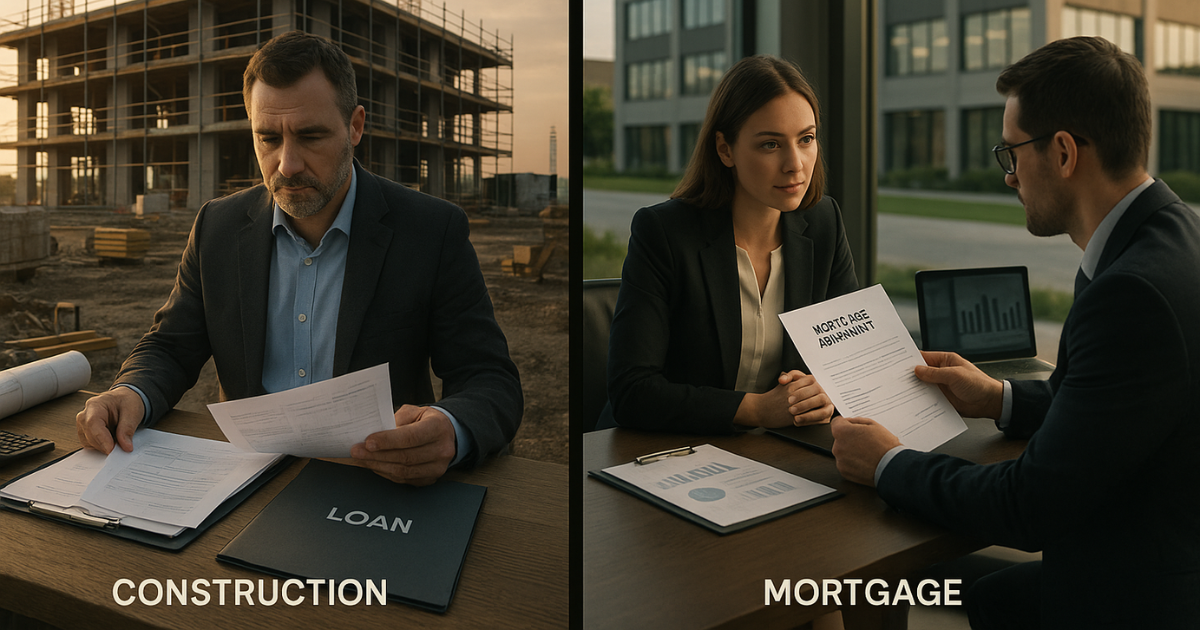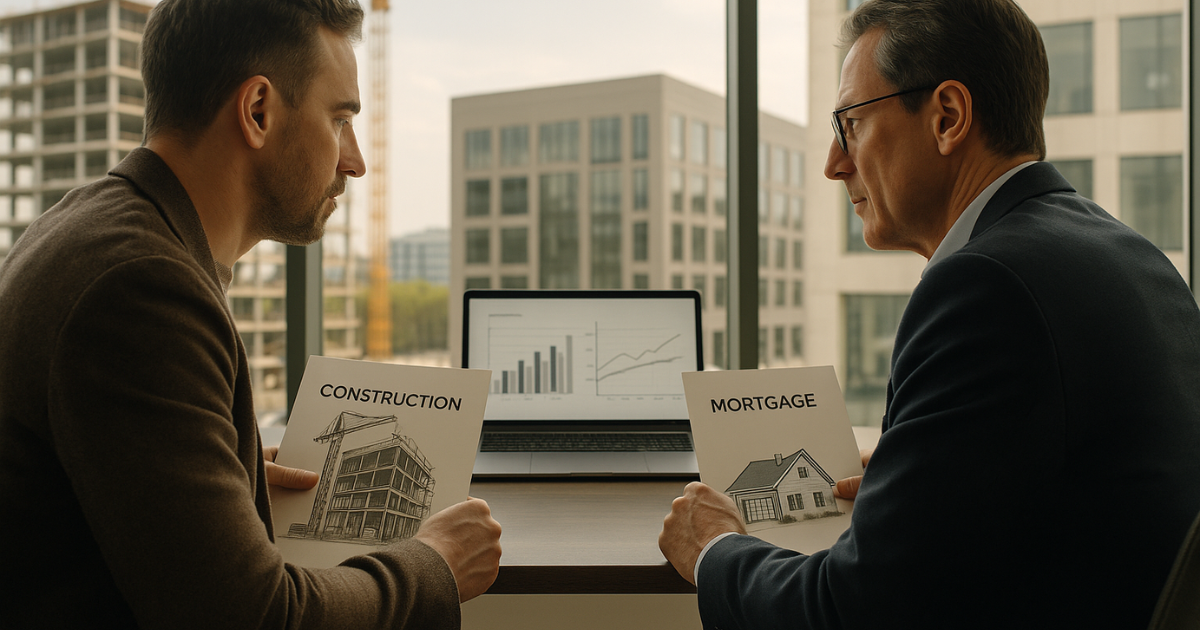Construction Loan vs Mortgage | Key Differences Explained

Construction loan vs mortgage: While both are home financing options, they serve different purposes. Construction loans are short-term loans for building a home from the ground up, while mortgages finance the purchase of already completed properties. Understanding this distinction is crucial in any home financing comparison, especially when exploring loan types for property buyers based on their goals and timelines.
Understanding the Basics: Two Different Paths to Homeownership
When navigating the types of home financing options, it’s important to distinguish between mortgages and construction loans. A mortgage is a long-term loan used to buy a move-in-ready home, whereas a construction loan is a short-term solution to fund homebuilding. Each path offers unique benefits and challenges depending on your financial situation and housing plans.
The choice between building a house vs buying a house often comes down to personalization vs convenience. Building gives you control over layout and design but requires more time, oversight, and financing steps. Buying an existing home is faster and typically less complex, making it a better fit for buyers seeking immediate occupancy.
How Construction Loans Work
Understanding how construction loans work begins with recognizing their temporary nature. These loans are short-term and usually interest-only during the build phase. Borrowers receive funds in intervals, based on construction progress, and must either pay off the loan or convert it into a mortgage once the project is complete.
The loan disbursement schedule for construction is known as a draw schedule. Funds are released in stages aligned with project milestones, foundation, framing, roofing, etc. Each draw is approved only after a lender-inspected verification, ensuring money is used appropriately and that the home is being built according to plan.
Traditional Mortgages: Simpler but for Completed Properties
Mortgages are designed for finished properties. To qualify, borrowers must meet standard mortgage loan requirements like a minimum credit score (typically 620+), consistent income, a favorable debt-to-income ratio, and a property appraisal that meets or exceeds the loan amount.
When comparing the mortgage vs construction loan approval process, mortgages tend to be more straightforward. Construction loans carry more risk for lenders, so they require detailed building plans, contractor approvals, and cost breakdowns, making them more complex to qualify for and manage.
Key Financial Differences Between Construction Loans and Mortgages

Interest rates for construction loans are generally higher than mortgage rates. Since construction involves more risk and uncertainty, lenders offset that risk with elevated rates, usually on an interest-only basis during the build phase.
The down payment for new construction is typically steeper, usually 20% to 25% of the total project cost. In contrast, mortgages may require as little as 3% down, depending on the loan program and borrower profile.
A construction-to-permanent loan explained: This loan merges both phases, construction and mortgage, into one package. Initially, you draw funds during construction, and once the home is complete, the loan automatically converts to a long-term mortgage, saving you a second closing and fees.
Transitioning to Permanent Financing
Many borrowers opt for permanent financing after construction, either through a construction-to-permanent loan or by refinancing after completion. At this stage, the lender reassesses the property’s value based on a final appraisal, and the borrower may need to requalify for the mortgage terms. This transition is critical to securing long-term affordability.
Summary Table – Construction Loan vs Mortgage Comparison
Here’s a quick home financing comparison between the two loan types:
Feature | Construction Loan | Mortgage |
Loan Type | Short-term, phased payouts | Long-term lump sum |
Interest Rate | Higher, interest-only | Fixed or variable |
Down Payment | Typically 20–25% | As low as 3% |
Use Case | Building a new home | Buying an existing home |
Conclusion
Choosing between a construction loan VS mortgage comes down to your financial goals, timeline, and appetite for complexity. If you’re drawn to custom home construction, are financially prepared, and can manage the longer timeline, a construction loan may be ideal. For those who value speed, simplicity, and immediate move-in, a mortgage is the more practical route. Whichever path you take, align your decision with solid personal finance principles and long-term planning.

